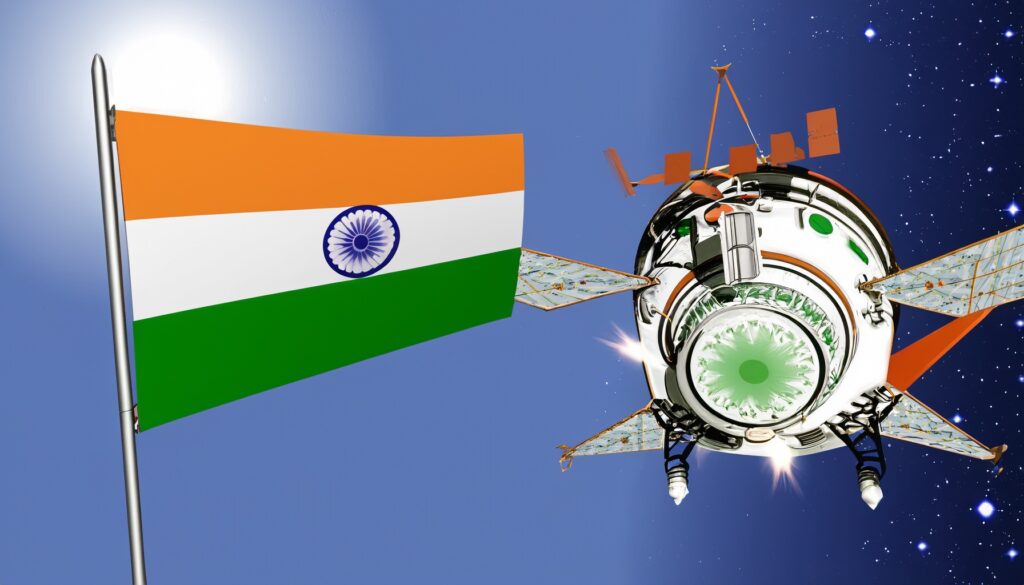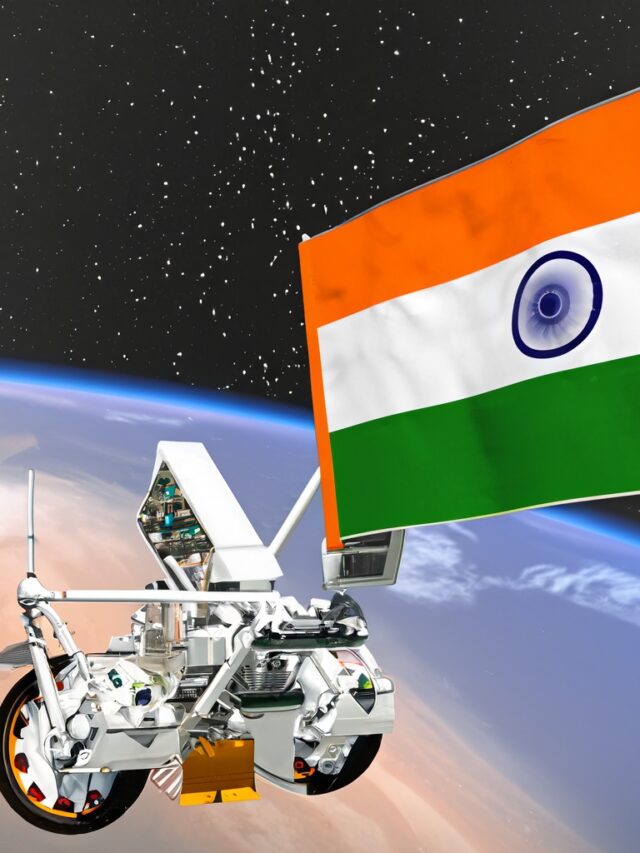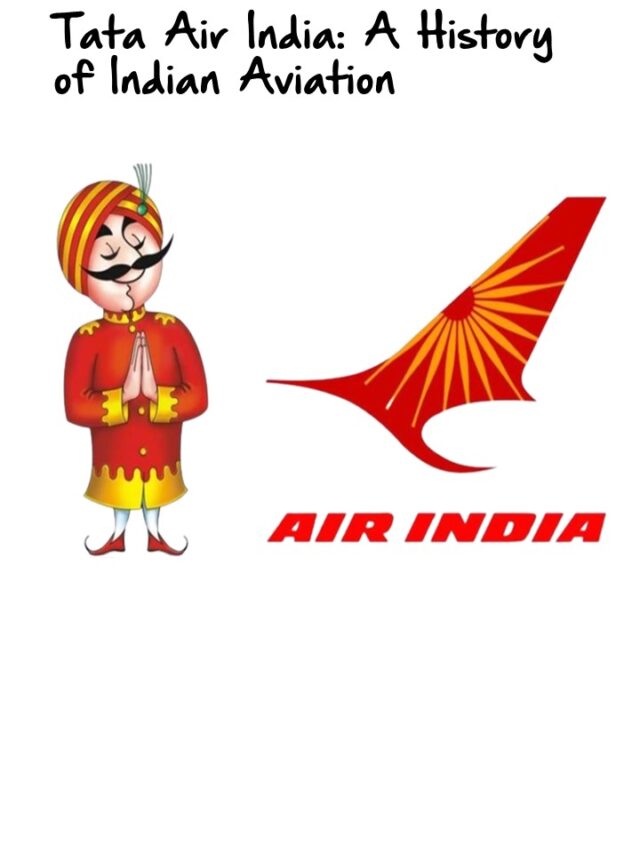Chandrayaan-3: Lessons on Achieving Life's Impossible
key lessons from Chandrayaan-3’s success that can be applied in daily life:
· Perseverance – Persist in the face of challenges
· Learn from failures – Analyze and improve
· Teamwork – Collaborate to achieve big goals
· Attention to detail – Be thorough and meticulous
· Adaptability – Be flexible to change
· Planning – Plan and prepare properly
· Passion – Pursue interests wholeheartedly
· Motivation – Stay motivated despite obstacles
· Innovation – Think creatively for solutions
· Precision – Strive for precision in work
· Quality focus – Have a quality-driven approach
· Risk management – Manage risks prudently
· Resource optimization – Use resources efficiently
· Foresight – Have strategic vision and direction
· Knowledge building – Enhance knowledge continuously
· Technological capabilities – Develop better capabilities over time
· Celebrate successes – Celebrate big and small achievements

1. Perseverance – After the disappointment of Chandrayaan-2’s lander crashing, ISRO persevered and started planning Chandrayaan-3 in 2020 itself. They worked for over three years to prove their lunar landing capability.
Ex: An athlete trains every day despite injuries, disappointments, and difficulty competing in the Olympics and winning a medal via hard work and perseverance.
2. Learning from failure – ISRO analyzed the flight data and determined that the lander crash was likely caused by a sensor glitch or problems with throttle control. They implemented algorithm improvements and sensor redundancies to avoid repeat failure.
Ex: After failing an exam, a student extensively analyses where they went wrong, seeks guidance from teachers, improves their study habits, and time management, and revises the weak topics in order to pass the exam on their second attempt by learning from their mistakes.
3. Teamwork – Hundreds of scientists, and engineers across multiple ISRO centers collaborated over the years, combining their expertise in areas like navigation, imaging, materials science, etc. to turn Chandrayaan-3 into a reality.
Ex: The members of a product team in a company use their individual strengths and expertise, brainstorm together, divide responsibilities, collaborate, and communicate effectively to successfully launch a new product, showcasing great teamwork.
4. Attention to detail – The landing sequence was examined in microscopic detail to avoid any risks. Navigation algorithms were reviewed and improved based on even small deviations noted in Chandrayaan-2’s flight.
E.g.: An artist pays extremely close attention to every minor brushstroke, colour tone, lighting effect, and element in their painting to create a beautiful artwork that captivates the viewer’s attention, highlighting their exemplary attention to detail.
5. Adaptability – Instead of simply reusing Chandrayaan-2’s systems, ISRO adapted the mission profile and made changes like strengthening the lander legs based on new learnings. This adaptability was key.
Ex: A company adapts its business strategy, product pricing, marketing channels etc. quickly based on changing consumer preferences, competitive landscape, and market conditions in order to sustain its growth and revenues, showing adaptability.
6. Planning – ISRO started planning for this complex mission years in advance. They planned the launch timing to maximize sunlight at the landing site, tested rover prototypes in lunar-like conditions, and conducted multiple pre-flight tests.
Ex: An event organizer carefully plans, budgets, schedules, and arranges every small detail related to venue, catering, equipment, and the program agenda months in advance to execute a successful conference leaving no room for errors in their excellent event planning.
7. Passion – The team was galvanized by the passion to demonstrate India’s capabilities in soft lunar landing, despite immense challenges. This passion motivated them to aim high again.
Ex: An environmentalist pursues ecology, conservation, sustainability, etc. with utmost passion, dedication, and devotion to spreading awareness, bringing change, and making a big positive difference in protecting nature and the planet for the future.
8. Motivation – The motivation to bounce back from failure kept the team dedicated for years. Their motivation ensured they solved every setback through the mission planning stage.
Ex: A writer stays highly motivated in the face of repeated rejections from publishers and keeps working tirelessly on the manuscript until their novel finally gets accepted and published through their sheer determination and motivation to succeed.
9. Innovation – New innovations like a Hazard Detection Avoidance camera using AI were added to the lander to avoid any surface rocks or craters. Such innovations boosted the mission’s success chances.
Ex: An engineer innovates an inexpensive, efficient, and easy-to-maintain water purification system using locally available materials to provide clean drinking water access to rural areas lacking it, showcasing great innovation.
10. Precision – ISRO scientists calculated the precise trajectory and velocity required to insert Chandrayaan-3 into a 100 km circular lunar polar orbit. Even slight errors in orbital precision could have led to mission failure.
Ex: A baker precisely measures each ingredient like flour, and sugar using measuring cups and weighs the components like butter to follow the recipe accurately, to bake a cake that turns out perfectly spongy and delicious.
11. Quality focus – The lander and rover underwent rigorous pre-flight testing to simulate lunar conditions and ensure all components worked reliably in the harsh environment. Quality checks were critical.
Ex: A manufacturer thoroughly checks each product coming off the assembly line for defects, subjects samples to stringent quality testing, and ensures all specifications are met to deliver high-quality products free of issues.
12. Risk management – A thorough risk analysis was done to identify and mitigate potential failure points in the soft-landing sequence. Back-up systems like auxiliary thrusters were incorporated to minimize risks.
Ex: A financial advisor thoroughly assesses possible risks, diversifies their client’s investment portfolio across various asset classes, maintains stop-losses, and hedges against market volatility to manage financial risks prudently.
13. Resource optimization – Instead of building a new orbiter, reusing the existing Chandrayaan-2 orbiter saved significant cost, time, and resources. It optimized mission resources.
Ex: A family buys reusable containers, minimizes food wastage, switches off unused lights and electrical appliances, and recycles materials to reduce waste, save money, and optimize resource utilization.
14. Foresight – Chandrayaan-3 built on the robotic landing experience gained from Chandrayaan-2 and was planned keeping in mind the goal of future manned lunar missions by India.
Ex: A young professional gets relevant work experience, and networks, enhances skills, and plans career development strategically in their early stage to achieve future career goals using foresight.
15. Knowledge building – The data on lunar soil composition, seismic activity, and subsurface terrain expanded scientific knowledge about the Moon’s geology and environment.
Ex: A student takes online courses to keep learning new skills beyond the college curriculum, reads books & and articles, and attends webinars to continuously build their knowledge throughout life.
16. Technological capabilities – ISRO Scientists and engineers developed improved camera sensors with higher resolution and more accurate focus to create detailed 3D terrain maps of the lunar surface. They also innovated new automated navigation algorithms using the latest software tools to guide the lander precisely and enable a safe descent, significantly enhancing India’s technological capabilities in these areas.
Ex: A smartphone company continuously invests in R&D to develop better camera sensors with features like low-light photography, AI-enabled scene optimization, and powerful image processors to improve photo quality. It also innovates new user interface designs, and applications of machine learning and leverages the latest chipset advancements to enhance the overall user experience. This showcases the company’s efforts to keep improving its technological capabilities over successive product generations.
17. Celebrate success – After spending years on this challenging endeavor, ISRO celebrated across the country to recognize its historic achievement.
Ex: Friends celebrate the completion of an important milestone project at work that took months of effort by getting together for dinner and drinks, highlighting the importance of celebrating success.
Disclaimer: This article is meant for informational and educational purposes only. It is based on publicly available information about ISRO’s Chandrayaan-3 mission to the best of the author’s knowledge. The technical details, capabilities, and projected timeline may change as per official announcements by ISRO. The article does not represent any confidential or proprietary information about Chandrayaan-3. Distribution or reproduction of this article is strictly prohibited. Any predictions, opinions, suggestions or lessons expressed by the author cannot be construed as facts and the reader assumes full responsibility for using this information. Please visit isro.gov.in for official updates on Chandrayaan-3 directly from ISRO.


